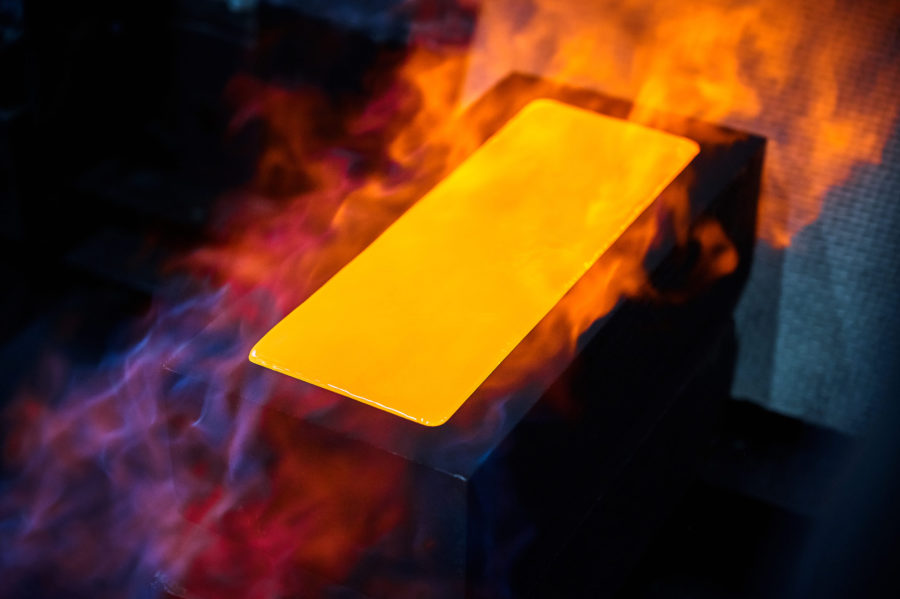Upsurge in gold production expected in Chile

With nearly 6 million tonnes mined each year, Chile is the world’s chief copper producer. Now, it turns out the country could someday become a leader in gold production as well, giving its neighbour, Peru, a run for its money.
According to recent United States Geological Survey statistics, Chile is now fourth in the world in terms of untapped gold reserves, after Russia and ahead of the United States. In 2011, Chile mined 50 tonnes of gold, but its potential could be as high as 3,750 tonnes. The same statistics project that Peru, which in 2011 mined 165 tonnes and is South America’s largest gold producer, has only 2,000 tonnes of gold remaining to be extracted.
Currently, Chile ranks 17th in the global ranking of gold production, according to IndexMundi.com, but now Chilean officials are saying the country is working hard to be among the top 10.
“By 2016, total gold production in Chile has the potential to triple today’s production, reaching more than 140 tonnes, which could put us eighth worldwide,” Vicente Perez, an analyst who works for the Chilean Copper Commission (Cochilco), told Infosurhoy.com last year.
Despite its low production to date, gold mining in Chile is definitely not new. In fact, it dates back to the end of the 16th Century when Spain turned its eye to Chile, after finding gold in Peru. The Spaniards managed to extract about two tonnes a year from gold mines in southern Chile, before copper became the country’s primary mineral export in the 19th Century.
Gold is often found with other ores like copper and silver but in the 1970s, a series of gold deposits were found in the Andean Cordillera. An article published in Business Chile Magazine states that Chile’s first large gold mine was “El Indio,” in the country’s north east. It began operating in 1982, reaching peak production of 16 tonnes a year. Canada’s Barrick Gold Corporation (TSX: ABX, NYSE: ABX), the world’s largest gold producer, bought the mine in 1994 but closed it in 2002 after its reserves were depleted.
Today, Barrick continues to play a significant role in Chile’s gold production. The company has two projects in the country: Cerro Casale and Pascua-Lama, which are expected to become operational in the next few years.
Cerro Casale, also in northern Chile and owned by both Barrick and Kinross Gold Corporation, is thought to contain one of the largest undeveloped gold/copper deposits in the world. Its deposits consist of large gold and copper orebody with reserves (100%) of approximately 720 tonnes of gold (or 23 million ounces) and 2,900 tonnes of copper (or 5.8 billion pounds).
When it opens, Pascua-Lama will be the largest gold mine in Chile. Construction is underway and the project, which straddles the border with Argentina, is expected to produce nearly 39 tonnes of gold a year by 2015, about 75% of which corresponds to Chile and the rest to Argentina.
Until then, Kinross remains Chile’s top gold producer. Its two mines in the Atacama Region – Maricunga and La Coipa – account for about 25% of total gold production. Kinross has invested heavily in exploration, mainly in La Coipa and at its new mine, Lobo-Marte.
Other gold-mining companies in the area include GoldCorp, Yamana Gold, Orosur Mining, and the Chilean state-owned Codelco.
______________________
With the contribution of Suzanne Soto, owner of Si! Corporate Communications, a Greater Toronto Area company providing public relations services in both English and Spanish.
More News
{{ commodity.name }}
{{ post.title }}
{{ post.date }}

Comments
Franciscofloresnunez
Me parece bien el avance minero pero a pesar de esto la región de La serena Capital del Norte no avanza ni se prepara al mismo ritmo que las mineras necesitamos apoyo para desarrollar proyectos de viviendas para los trabajadores mineros y Serena Norte los tiene pero el plan regulador no permite hacer casas, necesitamos cambiar esto ahora para poder estar preparados cuando las mineras traigan mano de obra a esta ciudad. Soy un Ingeniero Constructor ITO Consultor de Barrick que vive el problema a diario y con mis socios tenemos un plan, terrenos, ideas, pero falta voluntad del govierno para cambiar el uso de estos suelos y hacer casas que retengan la mano de obra en la región. Con la ayuda de los inversionistas que tengan una visión en este auge minero espero contactar y poder desarrollar el futuro del oro paralelamente con el auge de la ciudad en donde todos quieren vivir, La Serena……. franciscofloresnunez@gmail.com